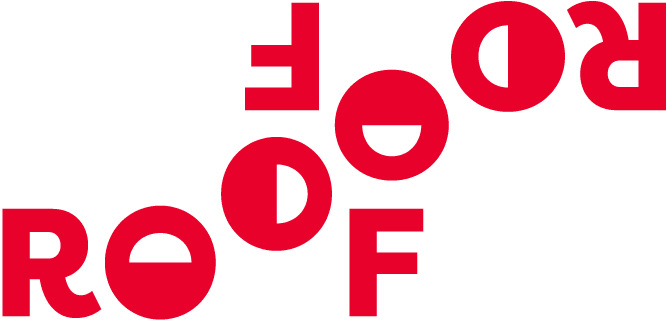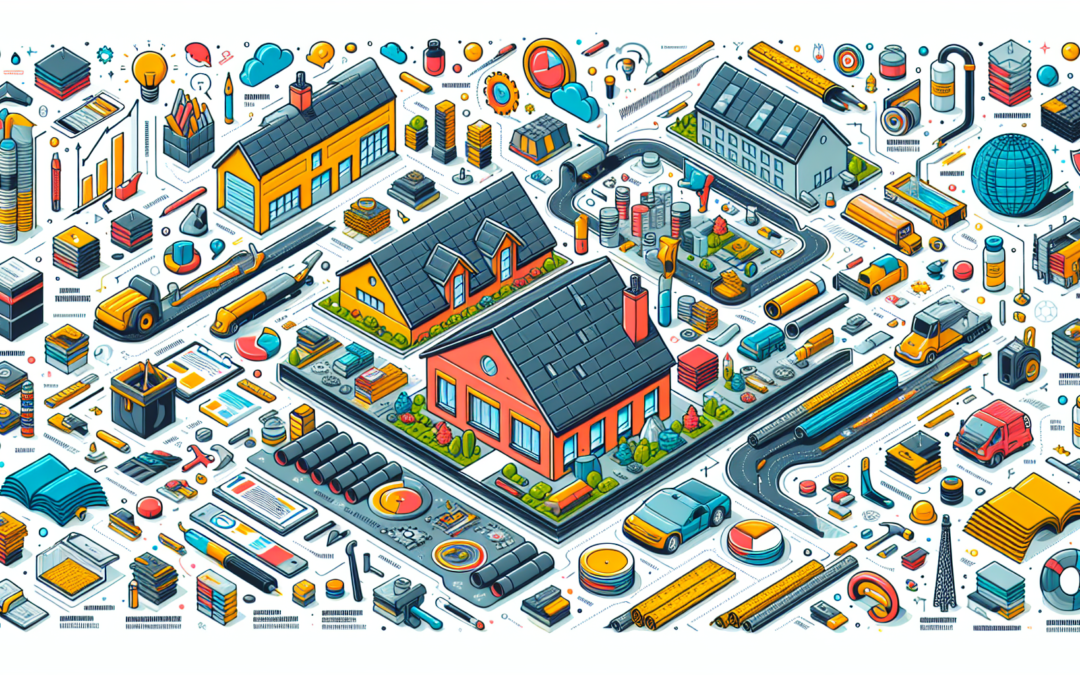
Jan 5, 2024 | Marketing
Understanding Referrals and Their Importance
Before diving into the tools, it’s crucial to understand what referrals are and why they are significant. Referrals, in the simplest terms, are recommendations from one entity to another. They are vital across various sectors, including business, healthcare, and employment, because they come with a level of trust and pre-established credibility. In business contexts, referrals can help companies achieve faster sales cycles, higher conversion rates, and, ultimately, stronger customer relationships.
Identifying Your Needs
Choosing the appropriate tools for obtaining referrals starts with a clear understanding of your specific needs and objectives. Are you looking for job referrals within your industry? Do you need customer referrals to boost your business? Or are you seeking professional service referrals such as in law or medicine? The nature of your needs dictates the kind of tools that will be most effective.
Tools for Business Referrals
Referral Software Programs
Referral software automates the process of managing and tracking referrals. These programs offer features like referral rewards, automated tracking of referral sources, and integration with your sales or CRM systems. Tools like Ambassador and ReferralCandy are popular among e-commerce and B2B companies for their user-friendly interfaces and customization options.
Email Marketing Platforms
Email marketing remains a powerful tool for generating referrals. Platforms like Mailchimp and Constant Contact allow businesses to create referral campaigns that incentivize existing customers to refer new ones. Through targeted and personalized email campaigns, companies can effectively communicate the benefits of their referral programs to their customer base.
Social Media
Platforms like LinkedIn, Facebook, and Twitter are invaluable for obtaining referrals, especially for businesses and professionals. LinkedIn, for instance, is perfect for B2B referrals and job-related recommendations. Social media tools allow for the easy sharing of referral information, increasing visibility and reach.
Tools for Personal and Professional Service Referrals
Professional Networking Sites
Websites like LinkedIn are also crucial for individuals seeking job referrals or professionals looking for clients. Through these platforms, users can showcase their expertise, connect with industry peers, and request or give recommendations, making them a powerful tool for professional growth.
Review and Rating Websites
For services like healthcare, legal, or home repair, websites that specialize in reviews and ratings, such as Angie’s List or Yelp, can be instrumental. These platforms allow users to search for highly-rated professionals in their area, read reviews, and sometimes even obtain contact information to request services directly.
Referral Networks
Professional associations and clubs often have internal networks or systems for referring services among members. These can be incredibly beneficial, as referrals come from trusted colleagues within the same industry. Joining relevant associations and being active within these communities can greatly enhance one’s chances of giving or receiving high-quality referrals.
Choosing the Right Tool
To select the most appropriate tools for obtaining referrals, consider your specific objectives, the nature of the referrals you are seeking, and your target audience. For businesses, referral software programs and email marketing might be key. For individuals and service providers, professional networking sites and review websites could be more beneficial.
Additionally, never underestimate the power of personal relationships and face-to-face interactions. While digital tools can amplify your reach and efficiency, genuine connections often pave the way for the most meaningful and valuable referrals.
Conclusion
Obtaining desirable referrals requires a strategic approach, the right set of tools, and a clear understanding of your goals. By leveraging the most suitable platforms and software, and by nurturing personal and professional relationships, you can significantly enhance the quantity and quality of your referrals. Always be proactive, stay engaged with your network, and recognize the power of giving referrals to receive them in return.

Jan 3, 2024 | Marketing, Web Design
Introduction to CSS Call-to-Action Buttons
Call-to-Action (CTA) buttons are essential elements on a website, guiding users towards your desired action, whether it’s signing up, making a purchase, or downloading a resource. The effectiveness of a CTA button largely depends on its design and functionality, which can be significantly enhanced using CSS (Cascading Style Sheets). In this article, we’ll explore some advanced techniques for creating compelling CSS CTA buttons that capture attention and encourage clicks.
The Importance of CTA Button Design
The design of CTA buttons can significantly influence user interaction and conversion rates. An effective CTA button stands out visually while fitting seamlessly within the overall design of the webpage. It should be immediately identifiable as clickable and convey a clear, compelling message that encourages action.
Color and Contrast
Color plays a pivotal role in making a CTA button noticeable. Choosing the right color can trigger the right emotion, prompting users to act. High contrast between the button color and the background, as well as the text on the button, ensures readability and draws attention.
Size and Shape
The size of the button should be large enough to be noticed without overwhelming other elements on the page. Rounded corners are often more appealing and are perceived as friendly, which can improve click rates.
Text and Typography
The text on a CTA button must be clear and concise, delivering a strong message with actionable language, such as “Download Now”, “Get Started”, or “Join Free for a Month”. Typography should ensure legibility and must align with the website’s overall style.
Advanced CSS Techniques for Styling CTA Buttons
Utilizing more advanced CSS techniques can further enhance the effectiveness of CTA buttons. Here are some ideas to help you get started:
Hover Effects
CSS hover effects make the button more interactive and engaging for users. They provide immediate feedback when an action is possible and are easy to implement with CSS properties like :hover. For instance, changing the button’s color, elevating with a shadow, or transforming the scale slightly can effectively indicate interactivity.
Example:
.button:hover {
background-color: #555;
box-shadow: 0 4px 8px rgba(0,0,0,0.15);
transform: scale(1.05);
}
Transitions and Animations
Adding CSS transitions can smooth out hover effects and other interactions, making them feel more natural. CSS animations can also be used to draw attention to the CTA by using gentle pulsing, spinning, or bouncing effects.
Example:
.button {
transition: all 0.3s ease-out;
}
.button:hover {
transform: translateY(-3px);
}
3D and Shadows
3D effects and shadows add depth to your buttons, making them pop out from the page. This can be achieved using box-shadow and transforming properties.
Example:
.button {
box-shadow: 0 10px 20px rgba(0,0,0,0.2);
}
.button:active {
box-shadow: 0 5px 10px rgba(0,0,0,0.2);
transform: translateY(4px);
}
Accessibility Considerations
Accessibility should never be an afterthought when designing CTA buttons. Ensure that they are accessible to everyone, including users who navigate using keyboards or screen readers. Use semantic HTML, like <button> tags, and ARIA attributes to enhance accessibility.
Testing and Optimizing CTA Buttons
Finally, the effectiveness of CTA buttons should be continuously tested and optimized based on real user data. A/B testing different styles and copies can help identify the most effective button features that encourage user interaction and conversion.
Conclusion
Enhancing your website’s CTA buttons with CSS is not just about making them attractive but also about improving their functionality and accessibility. By following these advanced techniques and continuously testing for improvements, you can create CTA buttons that not only look great but also drive user engagement and conversions effectively.

Jan 2, 2024 | Industry News, Marketing, SEO, Web Design
Introduction to Roofing Marketing Agencies
In today’s competitive market, roofing companies are increasingly turning to specialized marketing agencies to help them stand out. A roofing marketing agency specializes in crafting tailored marketing strategies designed specifically for roofing businesses. These agencies understand the intricacies of the roofing industry, from seasonal demand fluctuations to the unique selling points of different roofing materials. With their expertise, they can elevate a brand, reaching more customers and securing more projects.
The Role of a Roofing Marketing Agency
A roofing marketing agency plays a crucial role in defining and implementing effective marketing strategies tailored for the roofing sector. Their services encompass a wide range of marketing aspects, from digital marketing to traditional advertising and everything in between.
Digital Marketing Services
Digital marketing is at the heart of what most roofing marketing agencies offer. This can include:
- Website Development and Optimization: Creating a professional, user-friendly website that performs well in search engine results.
- SEO (Search Engine Optimization): Optimizing content and HTML source code to increase a website’s visibility on search engines like Google.
- Social Media Marketing: Enhancing presence on platforms like Facebook, Twitter, and Instagram to engage with a broader audience.
- Email Marketing: Crafting targeted and personalized email campaigns to nurture leads and inform clients about services and promotions.
Traditional Advertising
Though digital marketing is prevalent, traditional methods still play a vital role, especially in local markets. Common traditional marketing tactics include:
- Direct Mail Campaigns: Sending flyers, postcards, and promotional materials directly to potential customers within a specific area.
- Radio and Local TV Ads: Establishing a brand presence in a community by appearing on local media outlets.
- Outdoor Advertising: Utilizing billboards and signage to catch the eye of local homeowners and businesses potentially in need of roofing services.
Benefits of Hiring a Roofing Marketing Agency
Employing a roofing marketing agency comes with multiple benefits that can lead to substantial growth for a roofing business. Key benefits include:
Expertise in the Roofing Industry
These agencies have a deep understanding of the roofing market and customer base, which is vital in crafting effective messages and campaigns that resonate with target audiences.
Cost-Effectiveness
Outsourcing marketing efforts to a specialized agency can be more cost-effective than managing in-house teams, especially when it comes to needing a wide range of skills that might otherwise require multiple employees or contractors.
Access to Advanced Tools and Analytics
Marketing agencies have access to advanced tools and technologies that many roofing companies might not invest in independently. These tools can track campaign performance, monitor SEO progress, and streamline other marketing efforts efficiently.
Scalability
With a marketing agency, roofing companies can scale their marketing efforts up or down depending on their budget and business goals. This flexibility helps manage expenses while still maximizing outreach and engagement.
Choosing the Right Roofing Marketing Agency
Selecting the appropriate marketing agency is crucial. It’s important to consider their experience within the industry, their portfolio of past work, and their understanding of the roofing business’s specific needs. Discussion with potential agencies should include clarity on communications, reporting, cost structuring, and the overall strategic approach they would employ.
Conclusion
Hiring a roofing marketing agency can provide a robust path to enlarging your customer base, increasing sales, and building a stronger brand. By leveraging specialized expertise and advanced marketing techniques, roofing companies can achieve greater market penetration and sustained business growth. In an era where marketing is increasingly complex and critical, partnering with the right agency can be a significant strategic advantage.

May 3, 2023 | Industry News, Marketing, SEO, Web Design
Introduction to Contractor Marketing Services
In today’s competitive business environment, contractors across various industries such as construction, electrical, plumbing, and HVAC, face the challenge of not only delivering high-quality services but also effectively marketing their businesses. The right marketing strategies can dramatically increase visibility, appeal to potential customers, and boost profitability. This article explores top contractor marketing services that can help contractors strengthen their market presence and achieve business growth.
Understanding Digital Marketing for Contractors
Marketing for contractors has evolved significantly over the last decade with digital marketing becoming increasingly significant. Digital marketing for contractors involves various strategies aimed at reaching potential customers through digital platforms such as search engines, social media, email, and websites. A tailored digital marketing approach can help contractors not only survive but thrive in this competitive market.
SEO (Search Engine Optimization)
SEO is a crucial element of digital marketing that involves optimizing a website to rank higher in search engine results, making it easier for potential customers to find a contractor’s business online. For contractors, local SEO is particularly important as it optimizes visibility for local searches, which can directly lead to job opportunities and increased revenue. Effective SEO strategies include using relevant keywords, optimizing website content and structure, building backlinks, and ensuring the website is mobile-friendly.
PPC (Pay-Per-Click) Advertising
PPC is an internet advertising model used to drive traffic to websites, where an advertiser pays a publisher (typically a search engine, website owner, or a network of websites) when the ad is clicked. PPC campaigns can be highly targeted, offering immediate results that are easy to measure and track. They are particularly useful for contractors as they can target potential customers who are actively searching for specific services in real-time.
Social Media Marketing
Social media platforms like Facebook, Instagram, and LinkedIn offer powerful tools for building brand awareness and engagement. Contractors can use these platforms to showcase their work, share customer testimonials, provide helpful DIY tips, and communicate with potential and existing customers. Social media ads can also be highly targeted based on geographic location, demographics, interests, and behaviors, making them a cost-effective way to increase visibility and generate leads.
Email Marketing
Email marketing remains one of the most efficient ways to maintain relationships with existing customers and reach new ones. Contractors can use email newsletters to share important updates, promotions, new services, or tips that homeowners and businesses might find useful. Segmenting email lists based on customer interests or past projects can lead to higher engagement rates and conversion.
Website Design and Optimization
A professional, user-friendly website serves as the base of a contractor’s online presence. An optimized website must be visually appealing, mobile-responsive, and easy to navigate. It should clearly communicate what services are offered, where they are offered, and how potential customers can request these services. Additionally, integrating strong calls-to-action (CTAs) can guide visitors towards engaging with the contractor’s business, whether through filling out a contact form, signing up for a newsletter, or making a phone call.
Reputation Management and Online Reviews
For contractors, reputation can be everything. Many potential customers will research online reviews and testimonials before deciding to hire a contractor. Actively managing these reviews by responding to feedback, addressing concerns in a professional manner, and encouraging satisfied customers to leave positive reviews can significantly influence public perception and lead conversion rates.
Case Studies and Content Marketing
Showing off past projects through detailed case studies or portfolio galleries can significantly enhance a contractor’s credibility and attract higher-quality leads. Content marketing can also play a role here by demonstrating expertise through in-depth blog posts, videos, and infographics that help potential customers solve problems or learn more about common industry issues.
Summary
Contractor marketing services are essential tools in a contractor’s arsenal for attracting and retaining customers. By leveraging SEO, PPC, social media marketing, email marketing, and effective website design, contractors can enhance their online presence, build trust with their audience, and ultimately, grow their business more effectively. Finally, maintaining a strong reputation online and showcasing skills through content marketing are invaluable tactics for long-term success.

Apr 28, 2023 | Industry News, Marketing
When it comes to your business, having a solid and reliable roof over your head is crucial. It protects your building from the elements and ensures the safety of everything and everyone inside. However, roofing can be a bit tricky, especially because it involves a lot of different materials and techniques. Let’s dive into the world of business roofing to help you understand how it all works.
Types of Business Roofing
There are several key types of roofing used in the business world. Here are a few:
- Flat Roofs: These are very common in commercial buildings. They are easier to install over large areas and can be more cost-effective. However, they need good drainage to prevent water from pooling and causing damage.
- Metal Roofs: Known for their durability, metal roofs can last up to 50 years or more. They’re resistant to extreme weather conditions and can also help in reducing energy costs by reflecting sunlight.
- Shingle Roofs: While more common in residential buildings, some businesses choose shingle roofs for their aesthetic appeal. They come in many materials, including asphalt, wood, and slate.
- Built-Up Roofing (BUR): This type is made with several layers of bitumen and reinforcing fabrics. It’s a thick, durable option for flat roofs.
- Green Roofs: These roofs are covered with plants, which can reduce heating and cooling costs, manage water runoff, and provide a pleasant aesthetic. However, they need additional structural support to handle the extra weight.
Important Factors to Consider
When choosing the right roof for your business, you should think about a few important things:
- Weather: Your local climate plays a huge role in determining the best type of roof. For example, areas with heavy snowfall need roofs that can bear the weight of the snow.
- Energy Efficiency: Some roofing materials and colors can reflect sunlight, helping to keep your building cooler and reduce your air conditioning costs during the warmer months.
- Maintenance: Different roofs require different levels of maintenance. It’s important to know how often your roof will need care and what kind of costs are involved.
- Cost: The initial cost of a roof can vary widely depending on the material and the size of your building. Remember to also consider the long-term costs of maintenance and potential energy savings.
Getting the Right Help
Picking the right roof and making sure it’s properly installed can be a big task. It’s a good idea to get help from professionals who specialize in commercial roofing. They can give you personalized advice based on your building’s specifications and your local climate. Also, a good roofing contractor will offer warranties for their work, giving you peace of mind.
Remember, your business’s roof is a big investment. Taking the time to understand your options and make informed decisions will help ensure that you get the best value and protection for your business. Whether you’re installing a new roof or maintaining an existing one, knowing the basics of business roofing can go a long way.





